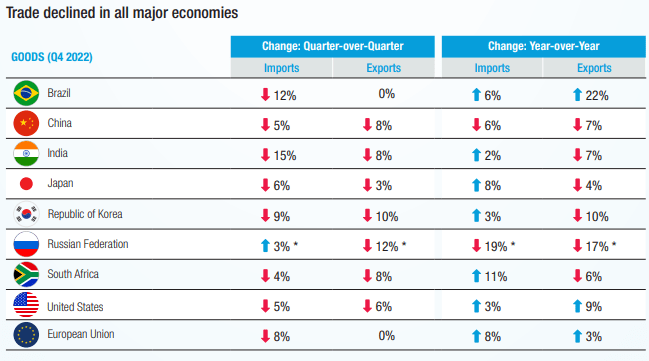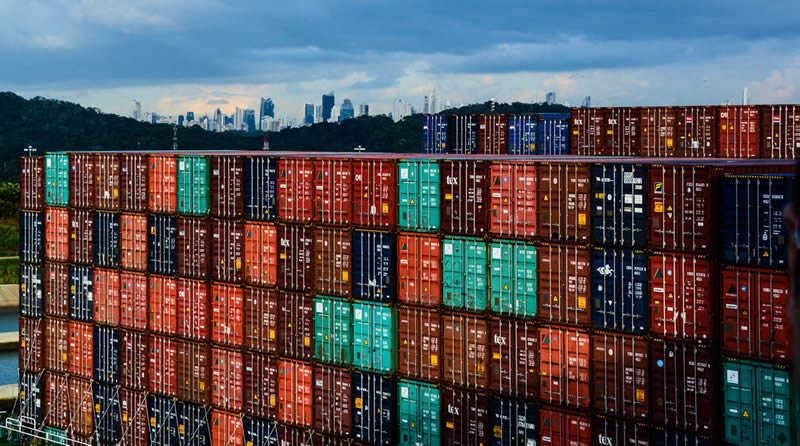World merchandise trade grew at a year-on-year rate of around 10% in 2022 to $25 trillion, UNCTAD reported.
Among the largest economies, in the fourth quarter of 2022 and at year-on-year rates, export growth was recorded in Brazil (22%), the United States (9%) and the European Union (3%).
On the contrary, in the same comparison, there were export reductions in the cases of China (-7%), India (-7%), Japan (-4%), South Korea (-10%), Russia (-17%), South Africa (-6 percent).

According to Banco Santander, the global macroeconomic environment faces challenges, such as economic setbacks from the Covid-19 pandemic, supply chain disruptions, high energy prices, inflation and the ongoing war between Russia and Ukraine.
In addition, there is great uncertainty about the effects of tight monetary policies adopted by central banks and financial authorities in some of the world’s major economies, including the United States, which may lead to GDP contractions in major economies in the short to medium term.
World merchandise trade
UNCTAD data also show that, at year-on-year rates, imports of the following economies grew in Q4 2022: Brazil (6 percent), India (2 percent), Japan (8 percent), South Korea (3 percent), South Africa (11 percent), the United States (3 percent), and the European Union (8 percent).
In contrast, imports from China (-6%) and Russia (-19%) fell.
Initiated in 2022, the war between Russia and Ukraine is contributing to further increases in energy, oil and other commodity prices and volatility in financial markets globally, as well as a new outlook regarding international sanctions.
There have also been concerns about conflicts, unrest and terrorist threats in the Middle East, Europe and Africa, which have led to volatility in oil and other markets, according to Santander.
The United States and China are embroiled in controversies related to Chinese trade barriers that have threatened a trade war between the two countries, which have applied or proposed to apply tariffs to certain imported products.
Tensions have also arisen between the United States and China over the future of Taiwan.
Sustained tension between the United States and China could significantly undermine the stability of the global economy.
![]()

